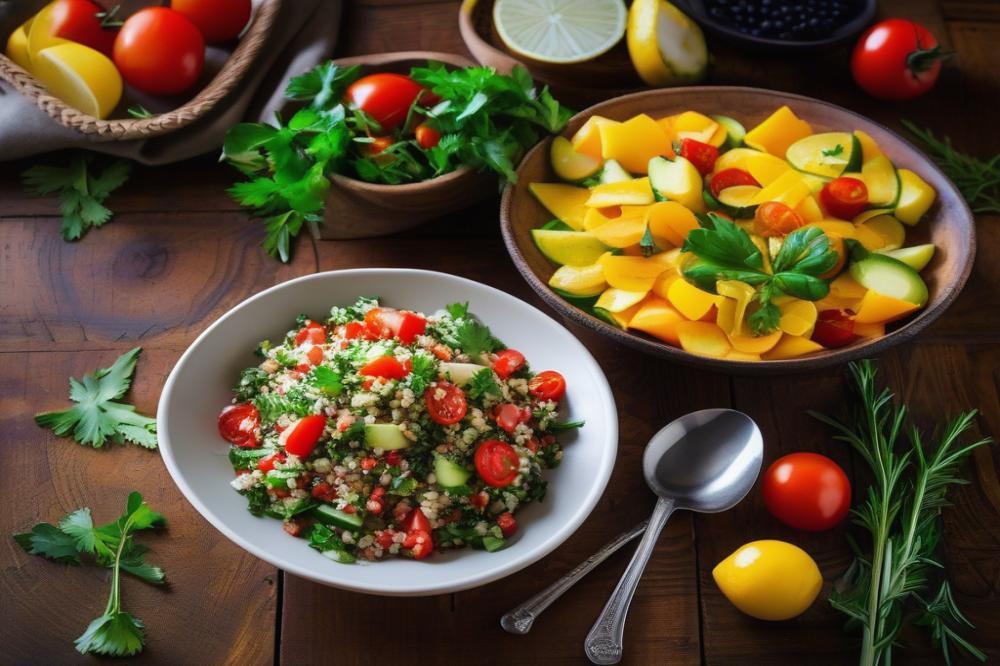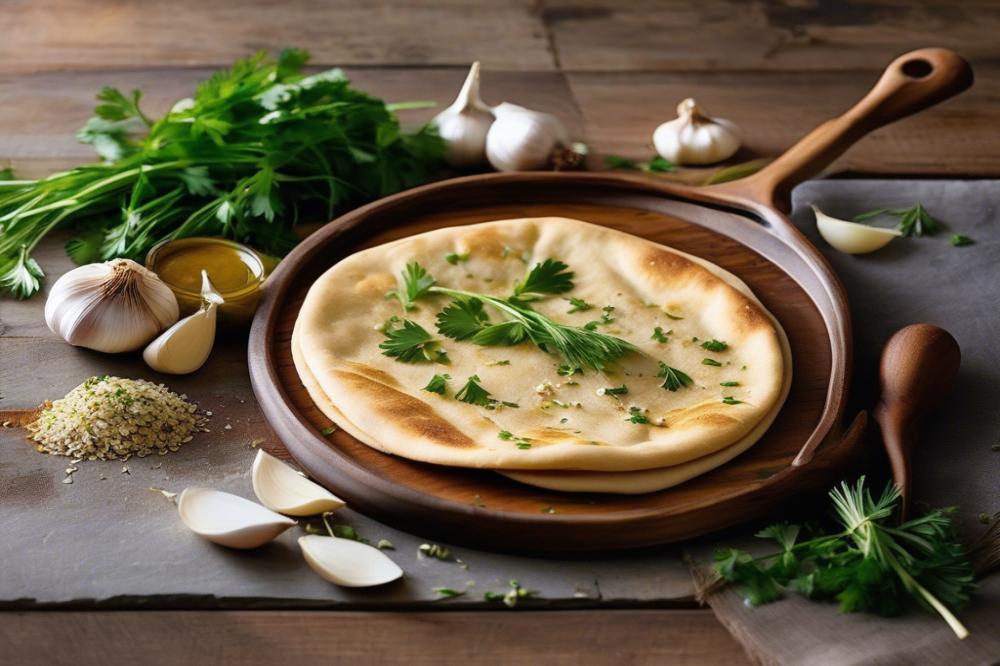Overview of Lebanese Tabbouleh Salad
Lebanese Tabbouleh salad is a delightful dish that captures the essence of Middle Eastern cuisine. This vibrant concoction of fresh ingredients creates a refreshing experience with every bite. parsley stands out as the star ingredient, offering both flavor and color. When combined with bulgur, mint, and a variety of vegetables like tomatoes and onions, it transforms into a dish that is both nourishing and appealing to the senses.
Freshness plays a critical role in preparing the perfect Tabbouleh recipe. Each component contributes to the overall taste, making it essential to select ripe tomatoes, crisp onions, and aromatic herbs. Olive oil and lemon juice are added to enhance the dish, bringing a beautiful balance of richness and acidity. Without these vital elements, the salad may lack the vibrant flavor for which it is known.
Culturally, Tabbouleh holds significant importance in many Middle Eastern households. It often graces the tables during gatherings and celebrations, symbolizing hospitality and love. Not only does this salad delight the palate, but it also contains a richness of tradition. Enjoying Lebanese Tabbouleh means connecting with a legacy that spans generations, making it more than just a meal—it’s a celebration of heritage.
What is Lebanese Tabbouleh
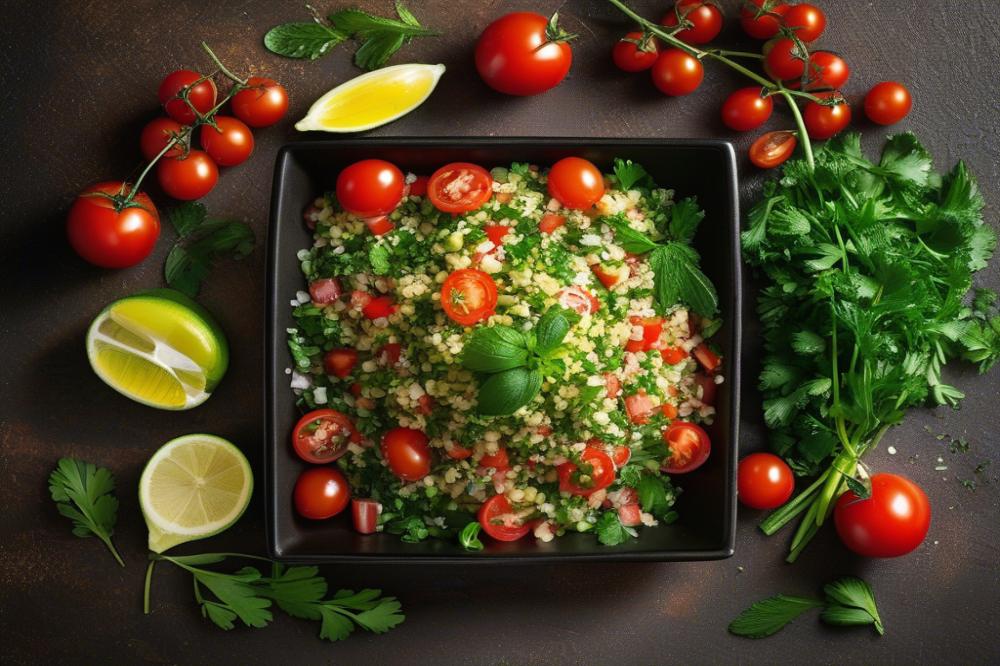
Tabbouleh is a classic salad that originates from the Middle Eastern region, specifically Lebanon. This dish is more than just a salad; it is a refreshing blend of flavors and ingredients. Traditionally, it is characterized by its green color and a vibrant taste. parsley is the dominant herb that brings a fresh, grassy note. Mint, another key herb, adds a cooling effect that balances the salad’s overall flavor.
The primary ingredients come together to create a delightful dish. bulgur, a type of cracked wheat, serves as the base. It provides a chewy texture that complements the fresh ingredients. Tomatoes and onions add sweetness and crunch, enhancing the overall experience. Olive oil and lemon juice bring richness and acidity, which are essential to the dressing. Each ingredient plays a significant role in crafting the distinct taste of Tabbouleh.
Difference between Authentic Lebanese Tabbouleh and Variations
Authenticity in Lebanese Tabbouleh lies in the precise balance of ingredients. Many variations exist, especially outside Lebanon. Some recipes use more bulgur and less parsley, which alters the salad’s character. In contrast, traditional versions include a higher ratio of parsley to bulgur. The authentic salad relies heavily on fresh herbs, reflecting the Lebanese love for bold flavors. Often, extra mint is added in variations, but this can shift the profile from what is originally intended.
Also, certain adaptations incorporate ingredients like corn or bell peppers. These additions can change the taste significantly and may appeal to different palates. However, true enthusiasts often prefer sticking to the classic recipe. This is to keep the identities of the ingredients intact. Ultimately, the essence of Lebanese Tabbouleh comes from its authentic roots, highlighting the simplicity and freshness of Middle Eastern cuisine.
Ingredients and Quantities
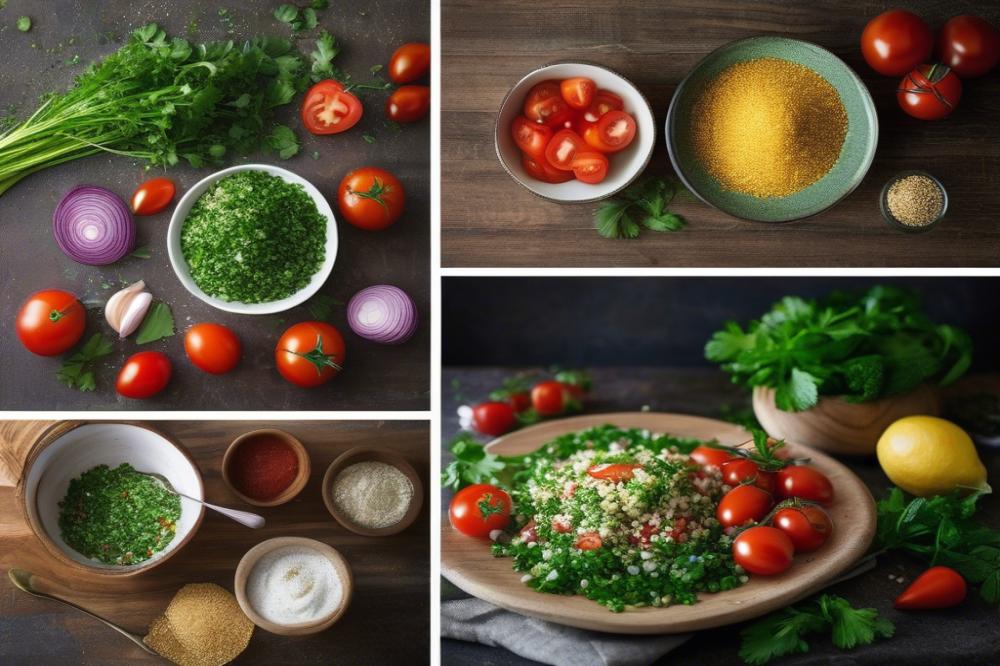
To make an authentic Lebanese tabbouleh salad, gather the following ingredients in precise amounts. Fresh parsley is the star of this dish, so you will need 1 cup of it, finely chopped. This vibrant herb provides the base for the salad. Next, take 1/2 cup of fine bulgur wheat. This ingredient adds texture and a nutty flavor that complements the greens.
For an extra layer of freshness, chop 1/4 cup of fresh mint leaves. The mint brings a bright, refreshing taste that balances well with the earthy bulgur. When choosing tomatoes, opt for ripe ones. You will need around 1 cup, diced into small, bite-sized pieces. These juicy morsels add color and sweetness to the mix.
Green onions are essential for their sharp flavor. Use 2 green onions, finely chopped. Their mild taste elevates the salad without overpowering it. Now, for the dressing, measure out 1/4 cup of extra virgin olive oil. This gives the tabbouleh a rich, silky mouthfeel. Pair this with 1/4 cup of fresh lemon juice. The acidity from the lemon juice brightens the entire dish.
Don’t forget salt! Add it to taste to enhance all the flavors. Finding authentic ingredients may require a trip to a Middle Eastern grocery store. Local markets may also carry fresh herbs and good-quality bulgur. Choosing fresh and authentic ingredients truly makes the salad shine.
Cooking Instructions
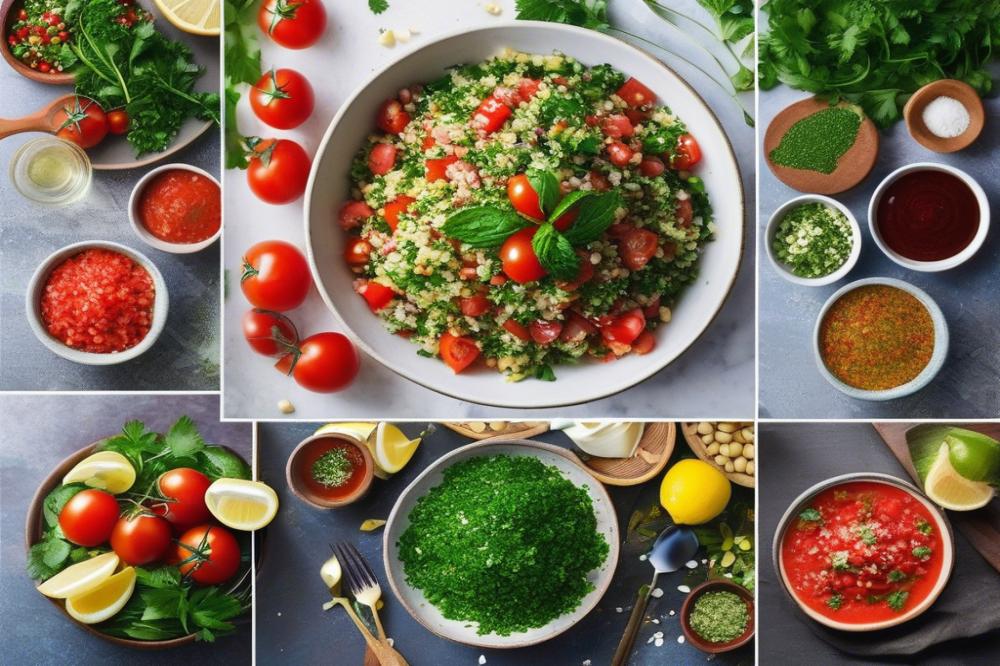
Preparing Bulgur Wheat
Begin by measuring out one cup of bulgur wheat. Rinse it under cold water in a fine-mesh strainer to remove any dust. Place the bulgur in a bowl and cover it with boiling water. The water should be double the amount of bulgur. Let it sit for about 20 minutes. As it absorbs the water, the bulgur will soften. After that, drain any excess water. Use a fork to fluff it up, making sure it’s all separated.
Chopping Herbs and Vegetables
Freshness is key in creating an authentic salad. Start with parsley; you will need about a cup, finely chopped. Mince a handful of mint leaves next, which will add a refreshing taste. Dice two ripe tomatoes into small pieces, ensuring they mix well. Chop half an onion finely for added flavor. Each ingredient brings a unique taste to the mix.
Combining Ingredients
In a large mixing bowl, add the bulgur wheat, herbs, tomatoes, and onions. It’s important to mix well to distribute all the flavors evenly. Pour in a generous drizzle of olive oil and the juice of one lemon. This is where the flavor deepens. Toss everything gently with a spoon. Make sure every piece is coated with the dressing.
Adjusting Seasoning and Chilling
Taste the salad and add salt and pepper as needed. Adjusting the seasoning can make a big difference in flavor. After mixing, cover the bowl with plastic wrap. Placing it in the fridge for at least 30 minutes will help the flavors meld together. Chilling is essential for a refreshing experience when served.
Serving Suggestions and Presentation Tips
When ready to serve, consider using a large platter. Spoon the tabbouleh onto the plate, spreading it evenly. Garnish with lemon wedges or a few whole mint leaves for visuals. This adds a pop of color and freshness. Serve the salad alongside grilled meats or pita bread for a complete Middle Eastern meal. Enjoy the vibrant flavors and textures of your creation.
Nutritional Information
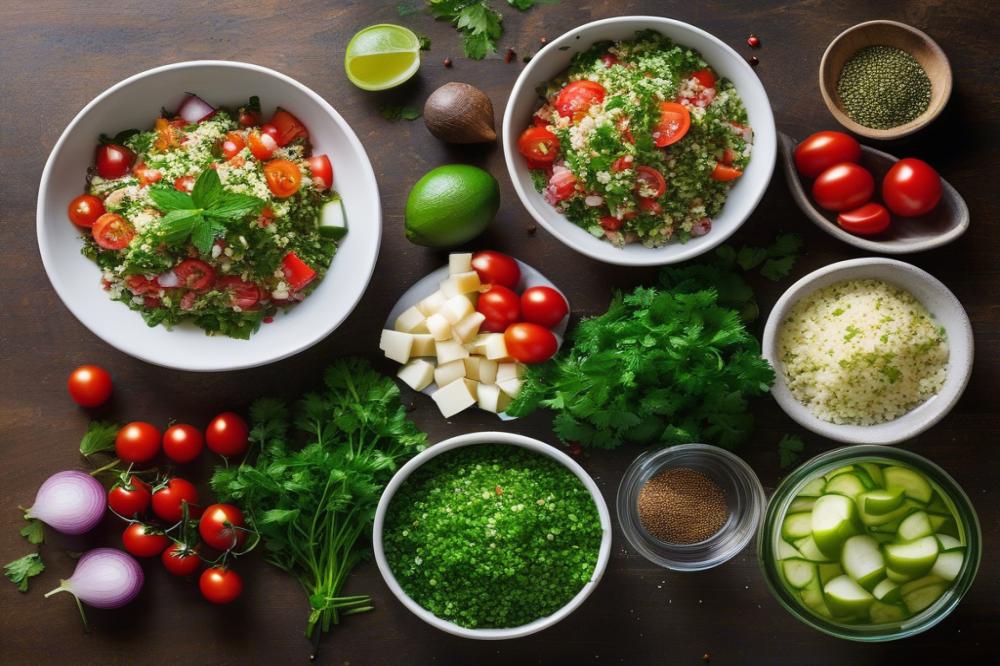
Tabbouleh is a wonderful choice for those seeking a healthy salad option. Each ingredient plays a crucial role in its nutritional profile. Let’s look at the breakdown of calories and nutrients found in the main components.
First, parsley is a star of this dish. One cup of chopped parsley contains about 22 calories. This herb is rich in vitamins K, C, and A. Bulgur, a whole grain, has approximately 151 calories per cup, providing a good source of fiber. Mint adds a refreshing flavor and contains around 5 calories per tablespoon. Tomatoes contribute about 22 calories per medium-sized fruit and are packed with antioxidants. Onions offer unique flavor and contain roughly 44 calories per medium bulb. Olive oil, used in dressing, has about 119 calories per tablespoon. Lastly, lemon juice provides negligible calories, often counted as 4 for a tablespoon.
Health Benefits of Key Ingredients
The health benefits of parsley, mint, and olive oil are significant. Parsley is known for its anti-inflammatory properties. It also aids in digestion and supports overall health due to its high vitamin content. Mint can help soothe digestive issues and adds a fresh note to the salad. It may also enhance cognitive function, making it a great addition.
Olive oil, a staple in many Middle Eastern dishes, is famous for its heart-healthy fats. Monounsaturated fats found in olive oil can promote good cholesterol levels. Its antioxidant properties also help fight diseases. These ingredients create a combination that benefits both body and mind.
Overall Healthfulness of Tabbouleh
This salad is not only delicious but incredibly nutritious. High in fiber and healthy fats, Lebanese Tabbouleh fills you up without excess calories. The mix of fresh herbs and vegetables provides vitamins and minerals that support a balanced diet. Its unique combination of flavors makes it a satisfying choice for any meal.
For those looking to increase their intake of fresh foods, this salad offers a fantastic solution. Each bite delivers a burst of freshness, making it a perfect accompaniment to various dishes. Enjoying a bowl of this authentic salad can contribute to a healthier lifestyle.
Tips for the Best Lebanese Tabbouleh
Choosing the Best Ingredients
Selecting fresh ingredients is key. Start with vibrant parsley. Flat-leaf parsley offers the best flavor. Fresh mint adds a refreshing twist. Use ripe tomatoes for juiciness. Look for firm onions to enhance taste. Bulgur is a staple grain in this dish. Opt for fine bulgur for that authentic texture. Quality olive oil plays an important role. Lastly, fresh lemon juice brightens the entire salad.
Timing and Freshness Considerations
Preparing tabbouleh just before serving is ideal. Freshness makes a visible difference. Allowing the salad to sit can cause ingredients to wilt. Chopping parsley and mint should happen right before mixing. This keeps their colors bright and flavors distinct. Serving cold brings out the best flavors. Consider chilling your ingredients for a refreshing touch.
Variations and Customization Options
Customization allows creativity while staying true to tradition. Some enjoy adding pomegranate seeds for a sweet crunch. Others might include diced cucumbers for added freshness. Different herbs can also be swapped in. Dill or cilantro can give unique flavors. Remember to adjust the olive oil and lemon juice to balance new ingredients. Spicy bell peppers can provide an unexpected kick.
Pairing Tabbouleh with Other Lebanese Dishes
This salad pairs beautifully with many Middle Eastern dishes. Consider serving it alongside grilled meats. Shawarma or kebabs complement tabbouleh nicely. Stuffed grape leaves also make a tasty match. A dollop of yogurt can cool down spicy flavors. Each combination enhances the meal experience. Enjoying tabbouleh with pita bread creates a satisfying bite.
Final Thoughts on Authentic Lebanese Tabbouleh
Authentic Lebanese Tabbouleh is more than just a salad; it is a celebration of flavors, textures, and culture. This dish highlights the importance of fresh ingredients, especially parsley and tomatoes, along with the earthy taste of bulgur. Making this salad authentically connects you to a rich tradition that has been enjoyed across generations.
Trying your hand at crafting this delightful dish can be a rewarding experience. The process is straightforward, and the results are sure to impress your family and friends. Even if you are new to cooking, mixing fresh vegetables and herbs can be a fun and enjoyable task. You might discover how satisfying it is to create something fresh, vibrant, and delicious.
Once you experience the joy of preparing Tabbouleh, don’t stop there. Exploring other Lebanese recipes can further expand your culinary repertoire. From savory dips to hearty main courses, Lebanese cuisine is filled with exciting flavors and unique dishes. Each recipe offers a glimpse into the rich culture and history behind them. Dive into the culinary traditions of Lebanon, and you will find a world of delicious possibilities waiting for you.

